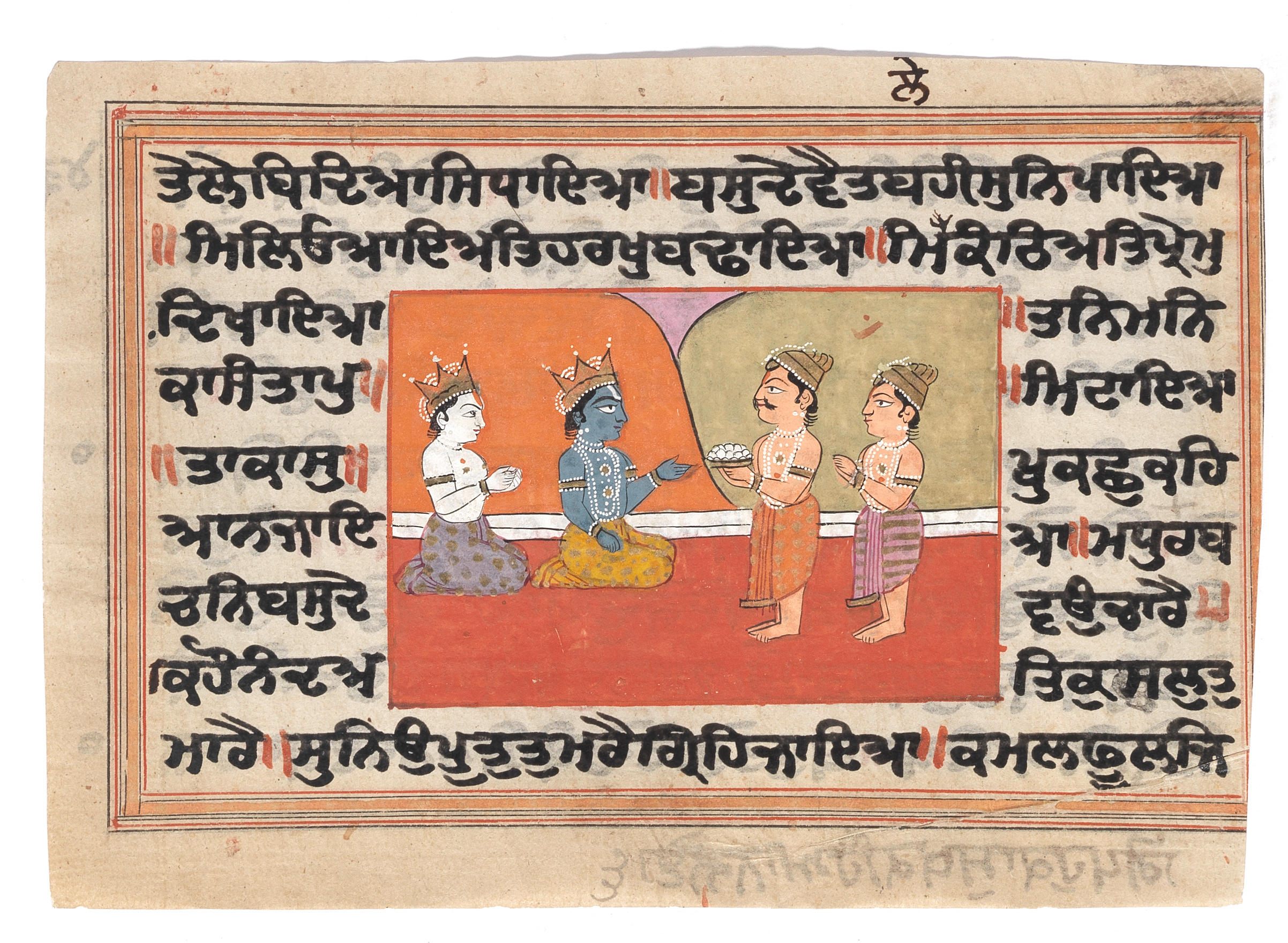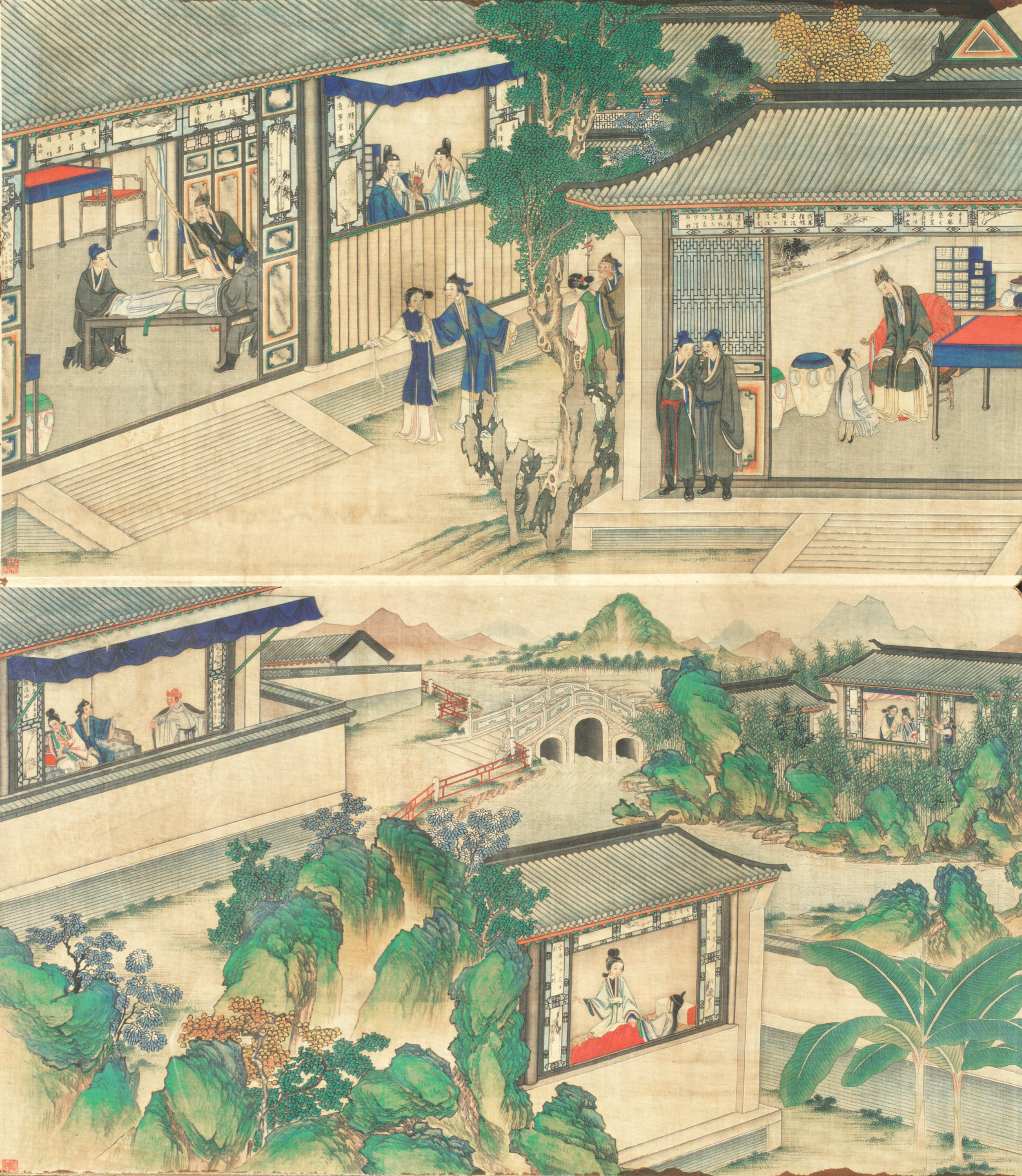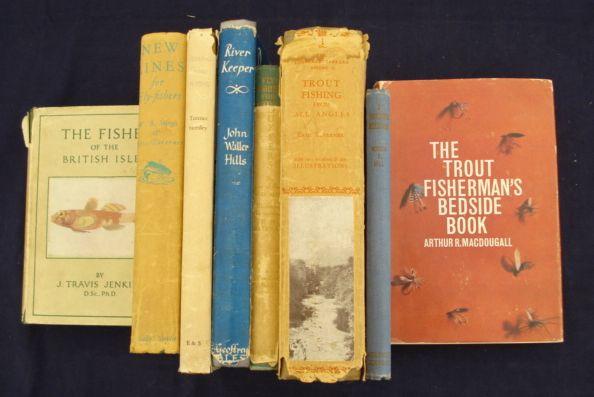Twenty-six leaves from a Book of Hours, each with delicately painted flowers attributable to Cornelia van Wulfschkercke, a Carmelite nun from the Carmelite convent of Sion, Bruges, or her immediate workshop, in Latin, manuscript leaves on parchment [Low Countries (Bruges), c. 1510-20] Twenty-six separate leaves, each with single column of 17 lines in a rounded late gothic bookhand with numerous ornamental penstrokes, terracotta-red rubrics, one- and 2-line initials in brown heightened with liquid gold penstrokes on burgundy, blue or pale green grounds, almost all with finely painted realistic flower cuttings (pansies, pea flowers, violets, rose buds and others) in their bas-de-page and occasionally in vertical outer border, one with a medieval jewel in the form of cross in its vertical outer border, these most probably the work of Cornelia van Wulfschkercke or her immediate workshop (see below), each leaf with at least one such border painting, one crude flower later added to vertical border of a single leaf, some small spots and stains, two leaves with small losses to corners, slight cockling to edges, else excellent and fresh condition, each leaf 126 by 87mm. From a dispersed Book of Hours identified by A.M.W. As-Vijvers as part of a small group of such books produced in Ghent or Bruges c. 1500-10 with single motifs in the borders, and in 2000 the only one she knew of with only one such decorative item per page (pers. comm., see also 'Marginal Decoration in Ghent-Bruges Manuscripts', in Sources for the History of Medieval Books and Libraries, 2000, pp. 245-56). The subsequent tracing of miniature leaves (reproductions included with this lot) enabled the identification of the artist as Cornelia van Wulfschkercke or her immediate workshop (compare those on the included reproductions with those in A.M.W. As-Vijvers, 'Manuscript Production in a Carmelite Convent: the Case of Cornelia van Wulfschkercke, Books of Hours Reconsidered, 2013, pp. 279-96 and 519-20, especially the prayerbook now Amsterdam, Free Library, MS. XV.05502, and the Ayala-Rodriguez Hours now Brussels, Bibliothèque Royale, MS. IV 104; compare also the flowers here with those in the border of the Prayerbook of Marguerite Clerckx, now Princeton, Garrett MS. 63, reproduced as fig. 10 on p. 290 and pl. 70 on p. 520). Cornelia van Wulfschkercke (d. 1540) entered the Carmelite convent of Sion, Bruges, by 1495, took her vows in 1501, and blazed a career as a female illuminatrix producing numerous books for patrons outside of the convent (see As-Vijvers, 2013 on their commercial output, and note that in 1512 and 1513 Sion rented a stall in the Bruges market arcade where luxury goods were sold: see J. Wilson, 'Marketing Paintings in late Medieval Flanders and Brabant', in Artistes, Artisans et Production artistique at Moyen Age, 1990, p. 624). She was trained as an artist by Grietkin Scheppers in 1503, who herself may have been the widow of an illuminator, and they appear to have both worked on a Gradual (now Paris, Bibliotheque Mazarine, MS. 432), where she is named in the colophon. Many of the convent's inmates were involved in book production and some twenty-three manuscripts can now be identified as among their output, with Cornelia van Wulfschkercke at its head. Any Book of Hours attributable to a named artist is a rarity, but a Book of Hours by a woman is altogether exceptional, for there is exceedingly slight secure evidence of any female artists in the Middle Ages. The parent manuscript of these leaves was reportedly owned by a Belgian private collector before 1995, who dispersed it, and single leaves were available in that year from a Dutch private collector. By 1999, when Roger Martin purchased his first leaf from it from Les Enlumineres, Paris, its leaves were widely dispersed throughout the European trade, and he set out to acquire as many as possible.
Twenty-six leaves from a Book of Hours, each with delicately painted flowers attributable to Cornelia van Wulfschkercke, a Carmelite nun from the Carmelite convent of Sion, Bruges, or her immediate workshop, in Latin, manuscript leaves on parchment [Low Countries (Bruges), c. 1510-20] Twenty-six separate leaves, each with single column of 17 lines in a rounded late gothic bookhand with numerous ornamental penstrokes, terracotta-red rubrics, one- and 2-line initials in brown heightened with liquid gold penstrokes on burgundy, blue or pale green grounds, almost all with finely painted realistic flower cuttings (pansies, pea flowers, violets, rose buds and others) in their bas-de-page and occasionally in vertical outer border, one with a medieval jewel in the form of cross in its vertical outer border, these most probably the work of Cornelia van Wulfschkercke or her immediate workshop (see below), each leaf with at least one such border painting, one crude flower later added to vertical border of a single leaf, some small spots and stains, two leaves with small losses to corners, slight cockling to edges, else excellent and fresh condition, each leaf 126 by 87mm. From a dispersed Book of Hours identified by A.M.W. As-Vijvers as part of a small group of such books produced in Ghent or Bruges c. 1500-10 with single motifs in the borders, and in 2000 the only one she knew of with only one such decorative item per page (pers. comm., see also 'Marginal Decoration in Ghent-Bruges Manuscripts', in Sources for the History of Medieval Books and Libraries, 2000, pp. 245-56). The subsequent tracing of miniature leaves (reproductions included with this lot) enabled the identification of the artist as Cornelia van Wulfschkercke or her immediate workshop (compare those on the included reproductions with those in A.M.W. As-Vijvers, 'Manuscript Production in a Carmelite Convent: the Case of Cornelia van Wulfschkercke, Books of Hours Reconsidered, 2013, pp. 279-96 and 519-20, especially the prayerbook now Amsterdam, Free Library, MS. XV.05502, and the Ayala-Rodriguez Hours now Brussels, Bibliothèque Royale, MS. IV 104; compare also the flowers here with those in the border of the Prayerbook of Marguerite Clerckx, now Princeton, Garrett MS. 63, reproduced as fig. 10 on p. 290 and pl. 70 on p. 520). Cornelia van Wulfschkercke (d. 1540) entered the Carmelite convent of Sion, Bruges, by 1495, took her vows in 1501, and blazed a career as a female illuminatrix producing numerous books for patrons outside of the convent (see As-Vijvers, 2013 on their commercial output, and note that in 1512 and 1513 Sion rented a stall in the Bruges market arcade where luxury goods were sold: see J. Wilson, 'Marketing Paintings in late Medieval Flanders and Brabant', in Artistes, Artisans et Production artistique at Moyen Age, 1990, p. 624). She was trained as an artist by Grietkin Scheppers in 1503, who herself may have been the widow of an illuminator, and they appear to have both worked on a Gradual (now Paris, Bibliotheque Mazarine, MS. 432), where she is named in the colophon. Many of the convent's inmates were involved in book production and some twenty-three manuscripts can now be identified as among their output, with Cornelia van Wulfschkercke at its head. Any Book of Hours attributable to a named artist is a rarity, but a Book of Hours by a woman is altogether exceptional, for there is exceedingly slight secure evidence of any female artists in the Middle Ages. The parent manuscript of these leaves was reportedly owned by a Belgian private collector before 1995, who dispersed it, and single leaves were available in that year from a Dutch private collector. By 1999, when Roger Martin purchased his first leaf from it from Les Enlumineres, Paris, its leaves were widely dispersed throughout the European trade, and he set out to acquire as many as possible.















Testen Sie LotSearch und seine Premium-Features 7 Tage - ohne Kosten!
Lassen Sie sich automatisch über neue Objekte in kommenden Auktionen benachrichtigen.
Suchauftrag anlegen